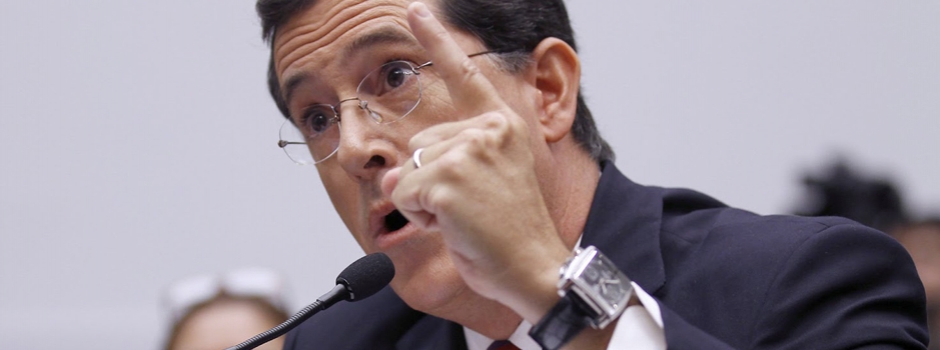ORIGINALLY PUBLISHED for TEAGUE – see it here
Over the winter jump I picked up a copy of Debbie Millman’s “Brand Thinking”, a compilation of interviews exploring the meaning and function of brand. Reading through the twenty or so conversations included in the book, I found myself reminded of Stephen Colbert’s 2005 neologism Truthiness. Wikipedia definesTruthiness as ‘a “truth” known intuitively “from the gut” or through feeling without regard to evidence, logic, intellectual examination, or facts.’ Colbert used the term to satirize the state of political discourse, but perhaps its relevance to matters of brand stems from the powerful influence ‘emotional-knowledge’ wields over the intersection of culture and persuasion.
To persuade, one must appeal—and nothing aids in that process more than the invocation of common beliefs and values. Endeavoring to describe how successful brands effectively attract and retain our imagination, Millman’s subjects return time and again to the dynamics of memory, cultural narrative and product promise. Central to their collective mediations is the importance for brand to tell an ‘original’ story—a unique history or point of view which once telegraphed through the fabric of culture acquires a shared, and if truly successful, personalmeaning. The fragility of this transaction —that a consumer will accept the message a brand broadcasts and internalize it as their own ‘truth’ —makes the business of brand one of the truly great encounters between intuition and commerce.
In the business of brand we confront a fundamental paradox: consumers aren’t stupid, but they aren’t rational either. As a result, the intrinsic value a brand represents is perpetually held hostage by the inscrutable calculus of human behavior. Therein lies brand’s Truthiness. For all the scrutiny surrounding brand nothing can detract from the simple fact that what motivates consumers is at best a messy combination of experience and emotion; something unnervingly analogous to intuition. Temper this enigmatic mix with the subjectivity of culture and you’ve got the makings of a truly stubborn problem.
This messy set of circumstances, this complex gruel—is precisely where design and brand meet. Design, like Brand, is an intuitive science; successful application is as much about ‘gut feeling’ as discrete knowledge. The best practitioners excel because they themselves are subject to the same set of emotions; their success the result of effectively mining the cloudy intersection of culture and persuasion — emotion and commerce. But trafficking in emotion in the name of commerce is a grey business easily side slip into flat out manipulation.
So it is with Truthiness. As an idea Truthiness endures because ittaunts. It insinuates. Lodging itself strategically between our rational and irrational selves; preying upon our desire to see ourselves as sensible beings while simultaneously calling into question that aspiration. But what happens to brands when we no longer have the ability to participate freely in this transaction? What happens when we can no longer ‘buy’ our way into this exchange? Toward the end of “Brand Thinking” Daniel Pink effectively breaks down what others in the book seem to skirt, the economic crash and the consumer’s loss of buying power has set in motion a potentially new trajectory for brand. No longer able to afford the ‘psychological’ support brand offers, consumers of every stripe are looking at brands anew. If in the past brand was about affiliation and self-expression, perhaps the future of brand is about more collective aspirations. How does that brand really behave as a citizen? Is it philanthropic? Does it care about the causes I care about? Does it teach me about a way to live or experience life that isn’t exclusively and reflexively concluded in a purchase? And why not? Many of the best brands already do. Patagonia drives toward transparency with the foot print chronicles, Coke delivers water to the those in need—perhaps some day Apple will step up and donate MacBooks to address the digital divide—these brands, like people, aren’t faultless but they are striving to orient the power of their brands in ways that are authentically civil. If experienceand feeling are really the fabric with which brand envelops us, how much of a stretch of the imagination is it to extend the broad domain of brand into values that tip toward—dare I say it, integrity?
That’s a Truthiness I can buy into—both literally and figuratively.

